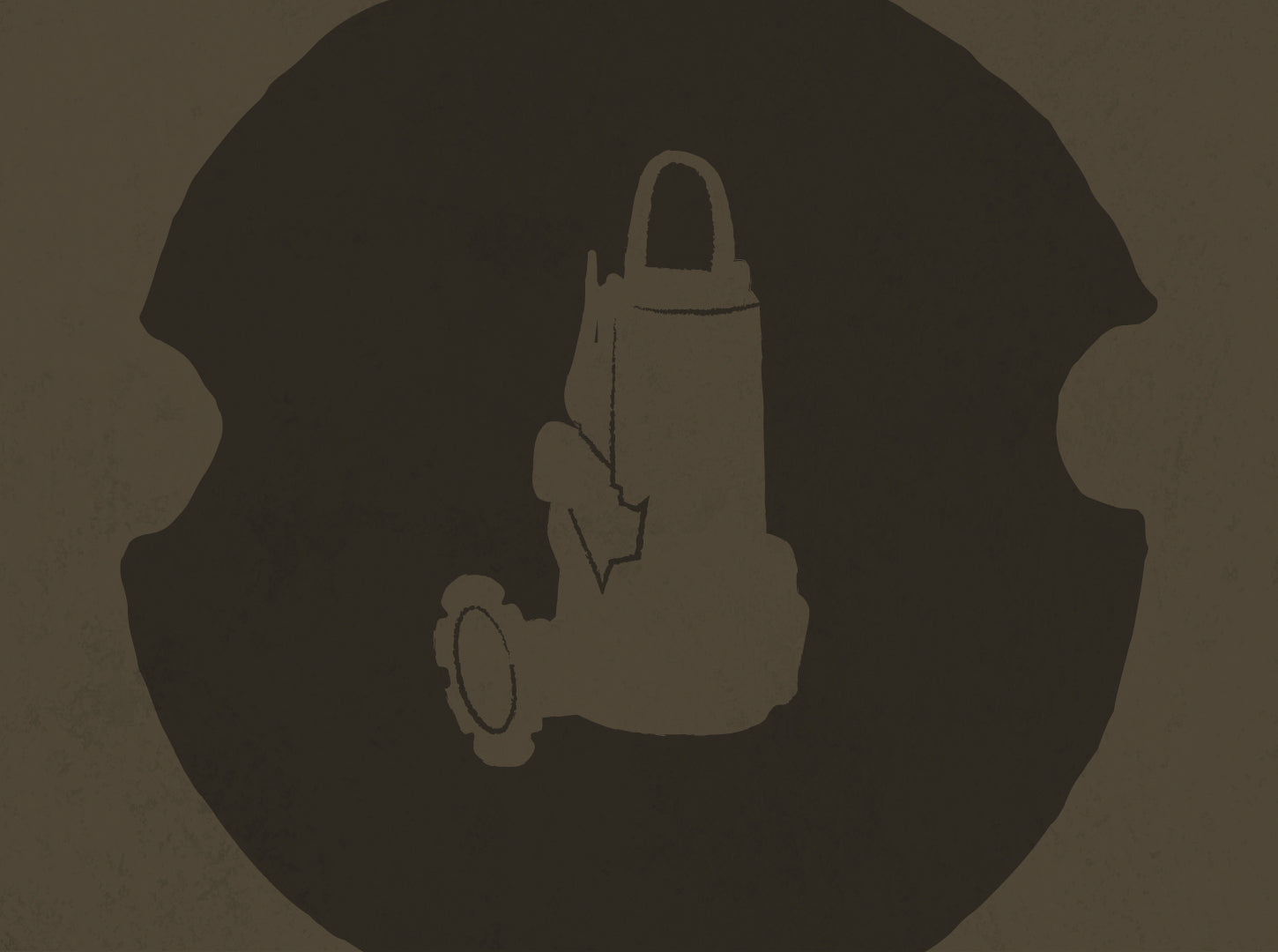By Anthony Castro
Last updated April, 2025
Different Types of Pumps and How to Select one for Your Application
There are a multitude of different pumps that can be used depending on your water or wastewater application. In this article, we will review the different pump types and how to select the proper pump for your project. It is critical to select the right pump based on the application to maintain efficiency and effectiveness.
Types of Pumps
1. Centrifugal Pumps

A centrifugal pump uses rotational energy to move fluid and is commonly used in the majority of water and wastewater applications. Centrifugal pumps are formed of an impeller that rotates inside the casing with a suction and discharge nozzle to create a pressurized side to push out the fluid through the discharge nozzle. Centrifugal pumps can come in different sizes and configurations with the following features:
-
Single-Stage Centrifugal Pumps - Consist of one impeller rotating on a shaft within a pump casing, which is designed to produce fluid flow when driven by a motor.
-
Multi-Stage Centrifugal Pumps - A pump in which the fluid flows through two or more impellers fitted in series for high pressure applications.
-
Self-Priming Pumps - Use a built-in mechanism to remove air and gases from the suction line and are typically larger than standard models, but are less prone to cavitation.
2. Positive Displacement Pumps (Used for Thick Sludge, High Viscosity, and Precise Flow Control)

A positive displacement pump is a type of pump that moves a fixed volume of fluid by repeatedly trapping it within a closed chamber and then mechanically displacing it through the system, ensuring a consistent flow rate regardless of pressure changes, often using mechanisms like gears, screws, pistons, or diaphragms to create the necessary volume variations within the pump chamber. These pumps move fluid by trapping a fixed amount and forcing it through the system but can come in a variety of different configurations, such as:
-
Diaphragm Pumps – Uses two diaphragms working in opposite phases that move back and forth, creating a vacuum to draw in fluid on one side and then pushing it out through the other side using pressure. These are useful for thick or abrasive liquids or chemicals.
-
Peristaltic (Hose) Pump – Continuously compress a flexible tube with rotating rollers, creating a vacuum that draws fluid into the tube and then pushes it along the tube to the outlet.
-
Rotary Lobe Pump – Uses two or more lobes rotating around parallel shafts in the pump’s body to move liquids.
-
Gear Pump – Repeatedly encloses a fixed volume using interlocking cogs or gears, transferring it mechanically using a cyclic pumping action.
3. Special-Purpose Pumps

-
Sewage Grinder Pump – Typically sits inside a buried outdoor tank that stores wastewater from a residential home or commercial building. A steel blade shreds solid waste to prevent blockage and ejects the wastewater into a public sewer system.
-
Chopper Pump – Uses a rotating cutting bar, positioned at the pump's suction inlet, to chop large solids into smaller pieces before they enter the pump's impeller, allowing the smaller particles to be easily pumped through the system.
-
Axial Flow Pump – Uses a propeller-like impeller to push fluid parallel to the pump shaft, meaning the fluid moves directly through the pump along the axis, gaining energy from the rotating blades and exiting at the other end with increased pressure.
When choosing a Pump:
| Pump | Pros | Cons | Best Applications |
|---|---|---|---|
| Centrifugal Pumps | Efficient for large volumes, simple design, low maintenance | Not suitable for high-viscosity fluids, prone to cavitation | Water supply, HVAC systems, irrigation, wastewater treatment |
| Single-Stage Centrifugal | Simple, cost-effective, easy to maintain | Limited to low to medium pressure applications | General water transfer, cooling systems, sump pumping |
| Multi-Stage Centrifugal | High pressure capability, energy-efficient for high-head applications | More complex, higher initial cost, requires more maintenance | Boiler feed water, high-rise building water supply, reverse osmosis systems |
| Self-Priming Pumps | Can handle air in the suction line, prevents cavitation | Larger and more expensive than standard centrifugal pumps | Dewatering, sewage lift stations, marine applications |
| Positive Displacement Pumps | Handles high-viscosity fluids, precise flow control, works well under varying pressures | More complex design, higher maintenance, lower flow rates | Chemical dosing, food processing, oil and gas industries |
| Diaphragm Pumps | Can handle corrosive/abrasive fluids, self-priming | Pulsating flow, lower efficiency compared to centrifugal pumps | Chemical transfer, slurry pumping, pharmaceutical applications |
| Peristaltic (Hose) Pumps | Gentle on fluids, no risk of contamination, easy maintenance | Limited pressure capacity, hose wear requires frequent replacement | Medical dosing, food and beverage, wastewater treatment |
| Rotary Lobe Pumps | Good sanitary applications, handles solids | More expensive, requires precise tolerances | Dairy, cosmetics, biotech, beverage production |
| Gear Pumps | High-pressure capabilities, efficient for viscous fluids | Cannot handle solids, wear and tear on gears | Lubrication systems fuel transfer, polymer and resin handling |
| Special-Purpose Pumps | Designed for specific task, high efficiency for intended use | Typically expensive, not versatile for other applications | Specific industrial municipal, and commercial applications |
| Sewage Grinder Pump | Prevents clogging by grinding solids | Higher energy use, requires regular maintenance | Residential and commercial sewage systems |
| Chopper Pump | Handles large solids reduces blockage | High power consumption, more complex deign | Agriculture, food processing, wastewater treatment |
| Axial Flow Pump | High flow rates, efficient for low-head applications | Not effective for high-pressure needs | Flood control, drainage systems, cooling water circulation |
Conclusion
Choosing the right pump depends on the specific application, fluid properties, and operational requirements. Centrifugal pumps are ideal for high-flow, low-viscosity applications, such as water distribution and wastewater treatment. Positive displacement pumps are better suited for handling thick, viscous fluids or precise flow control, making them ideal for industries like pharmaceuticals, food processing, and chemical dosing. Special-purpose pumps serve unique functions, such as sewage grinding, chopping solids, or high-flow, low-pressure movement.
By understanding the strengths and limitations of each pump type, industries can select the most efficient and cost-effective solution for their needs, ensuring smooth and reliable fluid handling across various applications.
References
-
"Centrifugal Pumps Working Principle," Ingersoll Rand, accessed March 5, 2025.
-
"What are Single Stage Centrifugal Pumps?" North Ridge Pumps, accessed March 5, 2025.
-
"Centrifugal Pumps: How They Work and What They Involve." DXP, last updated April 30, 2024.





Share:
Troubleshooting a Wastewater Control Panel: A Beginner's Guide